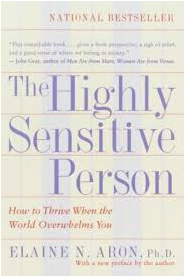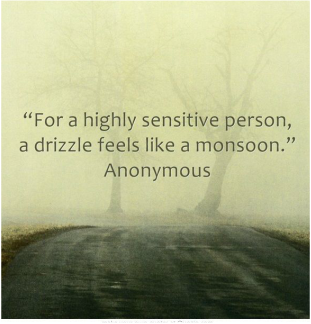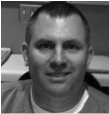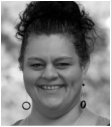
Many people with Borderline Personality Disorder (BPD) may also relate to the description above. Individuals with BPD are often very sensitive to environmental factors and other forms of stimulation (or lack thereof). For both HSPs and people diagnosed with BPD, there is often an optimal range of stimulation that is very narrow. In fact, there are many parallels between BPD and being an HSP, and Dr. Aron’s book provides information that can be helpful to both groups.

Aron provides both mental and physical strategies for addressing these feelings of overarousal, many of which are listed here. The chapter on how sensitivity affects one’s response to medical care is particularly helpful as well, since dealing with medical situations can be overstimulating for anyone.
Struggles in relationships. A hallmark of BPD is often unstable relationships, filled with “frantic efforts to avoid real or imagined abandonment.” These relationships often swing “from extreme closeness and love (idealization) to extreme dislike or anger (devaluation).”
While an HSP’s relationships might not include those extremes, they often have difficulties related to attachment as well. Many HSPs tend to fall in love harder than other people do, while some never seem to fall in love. Often this is related to having developed a non-secure attachment style during childhood, perhaps reflecting “the way that a sensitive child is more aware of the subtle cues in any relationship,” particularly that with a caregiver.
To address these struggles, Aron suggests looking back over one’s own love history and seeing if it makes sense in terms of early attachment, and to particularly consider whether one has brought intense needs left over from childhood into their adult relationships. “To have some of those needs left over is to be supplied with the normal “glue” of adult closeness,” she writes. “But we can only ask so much from a fellow adult.”
Dissociation. People with BPD often experience dissociative symptoms such as feeling cut off from themselves or like they are observing themselves from outside their bodies, sometimes losing touch with reality. HSPs are also prone to dissociate in response to trauma.
Mindfulness practices, including meditation and embodied awareness, can help people find a “bigger, fresher perspective on life,” Aron writes. Connecting with one’s own body and inner world can help prevent dissociative symptoms and provide a healthier way of dealing with the stress caused by overstimulation.
The book offers a path to greater healing and self-acceptance by describing increased sensitivity, which Aron calls “a trait common to many,” and offering strategies to help those with this trait not only cope, but thrive. The book’s gentle tone is accessible and comforting. Each chapter offers opportunities for reflection, often in the form of writing activities, which can help with greater awareness and self-understanding. The reflection activities offer readers a way to reframe their experiences in light of their sensitivity, possibly helping them to develop a healthier way of relating to and integrating those experiences. Additionally, the book frequently describes the many advantages of having a highly sensitive nature, and offers readers a fresh perspective on something they might previously have only seen as a problem.
 Amanda Butler (also HSP) is a freelance writer from Salt Lake City. She is the Founder of Alembic Publications and volunteer for the Jung Society of Utah. Amanda is also an HSP. |










 RSS Feed
RSS Feed